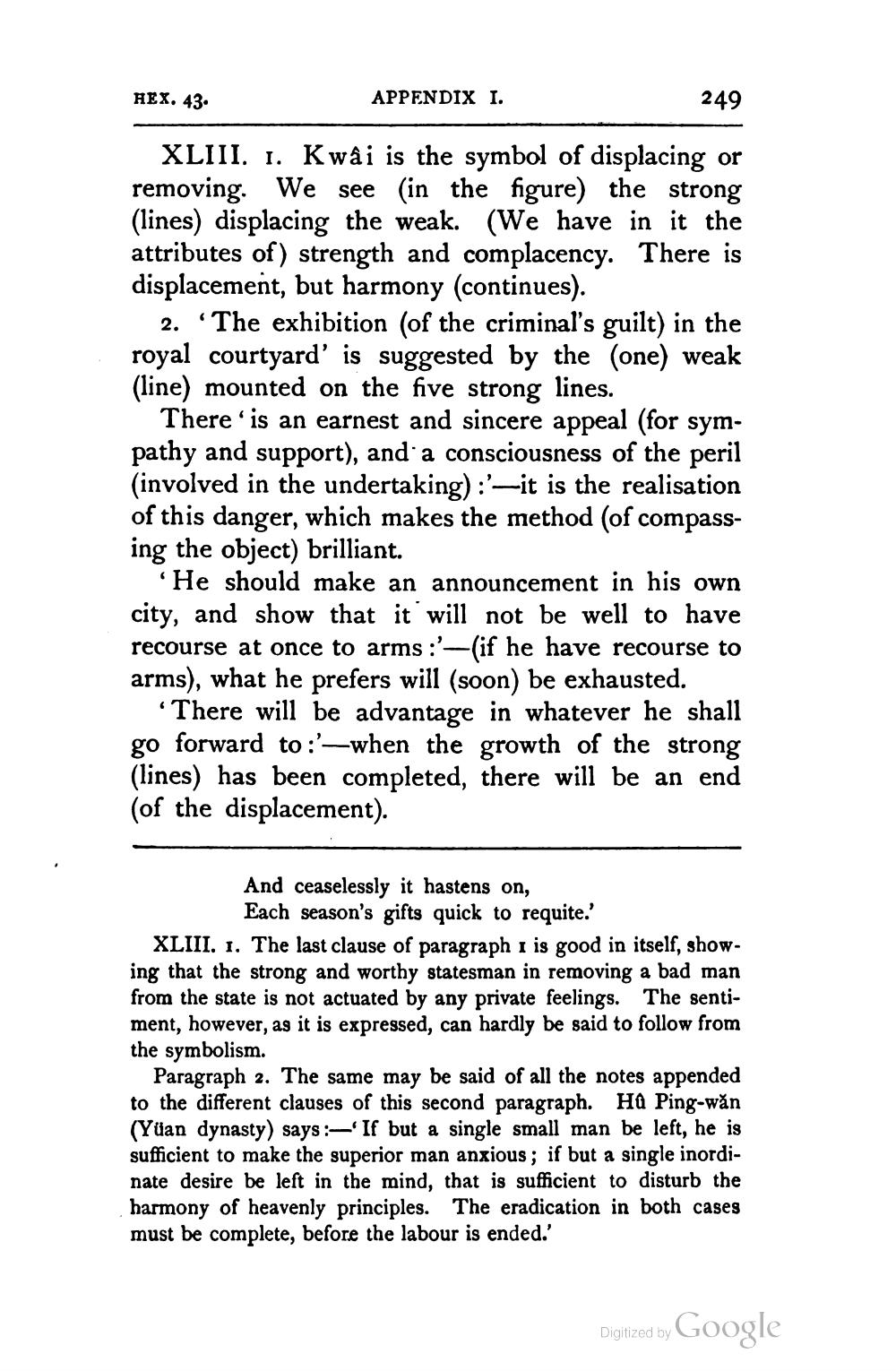________________
REX. 43.
APPENDIX I.
249
XLIII. 1. Kwai is the symbol of displacing or removing. We see in the figure) the strong (lines) displacing the weak. (We have in it the attributes of) strength and complacency. There is displacement, but harmony (continues).
2. “The exhibition (of the criminal's guilt) in the royal courtyard' is suggested by the (one) weak (line) mounted on the five strong lines.
There is an earnest and sincere appeal (for sympathy and support), and a consciousness of the peril (involved in the undertaking) :'-it is the realisation of this danger, which makes the method (of compassing the object) brilliant.
'He should make an announcement in his own city, and show that it will not be well to have recourse at once to arms:'-(if he have recourse to arms), what he prefers will (soon) be exhausted.
There will be advantage in whatever he shall go forward to :'-when the growth of the strong (lines) has been completed, there will be an end (of the displacement).
And ceaselessly it hastens on,
Each season's gifts quick to requite.' XLIII. 1. The last clause of paragraph 1 is good in itself, showing that the strong and worthy statesman in removing a bad man from the state is not actuated by any private feelings. The sentiment, however, as it is expressed, can hardly be said to follow from the symbolism.
Paragraph 2. The same may be said of all the notes appended to the different clauses of this second paragraph. HQ Ping-wăn (Yüan dynasty) says :- If but a single small man be left, he is sufficient to make the superior man anxious; if but a single inordinate desire be left in the mind, that is sufficient to disturb the harmony of heavenly principles. The eradication in both cases must be complete, before the labour is ended.'
Digitized by Google




